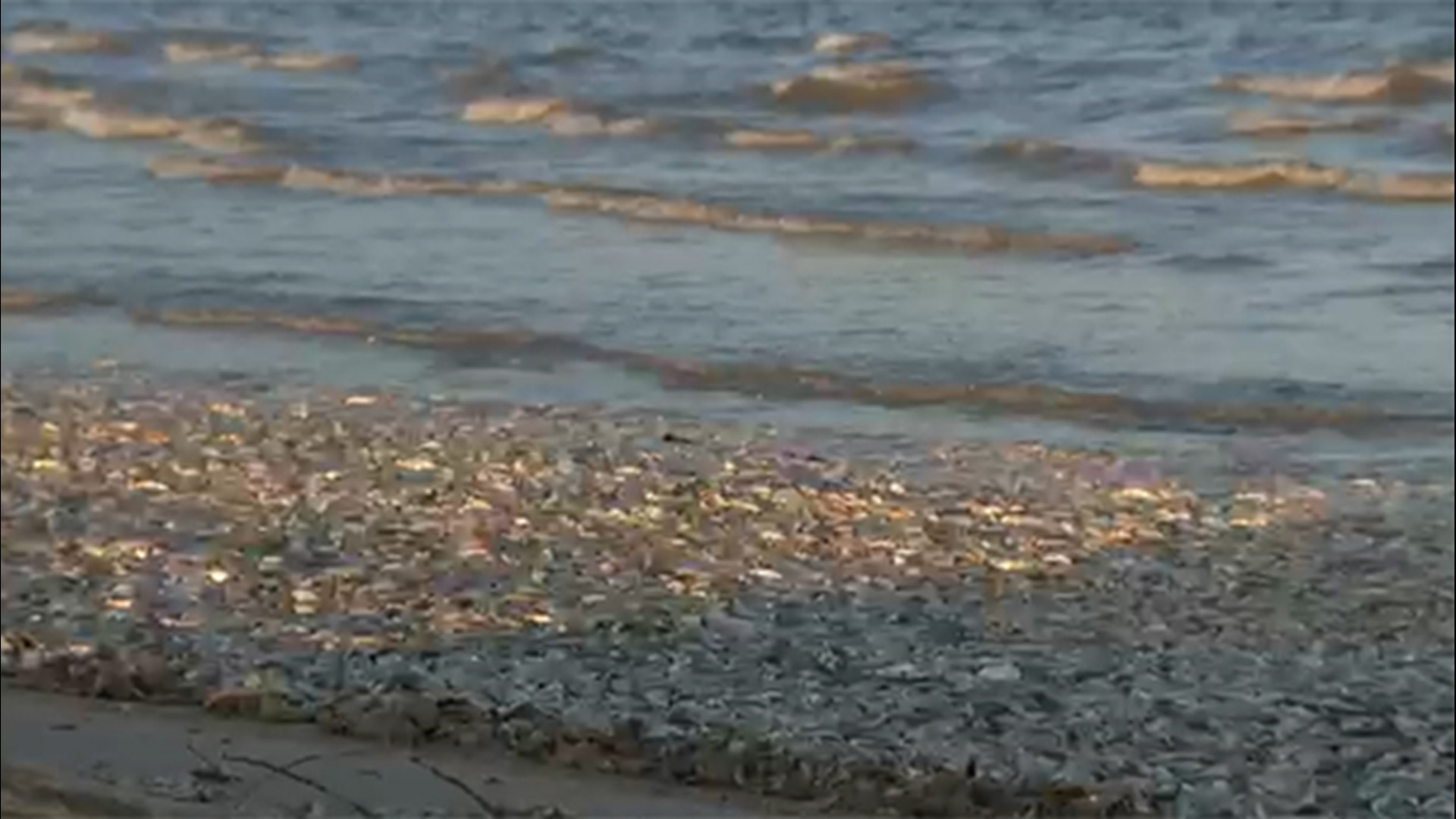BRAZORIA COUNTY, Texas — Mother nature is doing its thing with the heat in Houston.
We, humans, aren't the only ones feeling the effects of the scorching weather. Seas of dead fish are washing up along the coast of Brazoria County because of the hot temperatures.
Katie St. Clair, the sea life facility manager at Texas A&M University at Galveston, said the fish simply can't breathe because of the lower-than-normal, dissolved oxygen in the water.
“As we get these warmer Gulf water temperatures, the water itself has less capacity to hold dissolved oxygen, which of course is really important and essential for the fish and other animals to breathe," she said.
St. Clair said this phenomenon affects schools of fish the most.
A video posted on social media shows hundreds -- and we mean hundreds -- of fish washed ashore on Bryan Beach in Freeport, Texas.
“It's still alarming to see that and just because it's a natural occurrence doesn't mean it's necessarily a pleasant one," said Bryan Frazier, Brazoria County's park director.
Less wave action has also been a contributor to the dead fish.
Brazoria County has used heavy equipment to rake up the dead fish. They then bury them in the dunes to take away the smell. The fish become compost, which serves as a health park of the ecosystem for the dune grass.
As wild as this is, this isn't all that uncommon.
“It’s happened before," one beachgoer we talked to said. "I’ve seen it twice.”
It's hard to say how long this will last, but it's an issue the county said it will continue to deal with.
The Texas Department and Wildlife Department released the following statement on the dead fish:
"According to the Kills and Spills Team in Region 3, the fish kill was investigated and it was determined to have been caused by a low dissolved oxygen event. The species most impacted was Gulf menhaden. Fish kills like this are common in the summer when temperatures increase. If there isn't enough oxygen in the water, fish can't "breathe." Low dissolved oxygen in many cases is a natural occurrence. Daily variations in dissolved oxygen concentration are attributed to photosynthesis and aerobic respiration. Increased dissolved oxygen during the day is a result of photosynthesis which is driven by sunlight. Photosynthesis stops at night and may slow down on cloudy days, but plants and animals in the water continue to respire and consume free oxygen, decreasing the dissolved oxygen concentration. Often before a kill event occurs, fish can be seen trying to get oxygen by gulping at the surface of the water early in the morning. Some fish may also be lying on the bottom or at the edge of the water."

